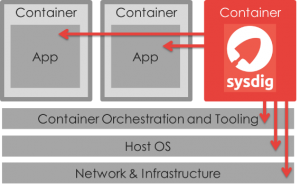When people think of IT mobility, the images most immediately conjured regard smartphones and tablets. In truth, however the mobile device landscape could be considered broader than this. The basic definition of a mobile device is simply “any computing device designed principally for portability.” By that definition, laptops should clearly be included in that scope. However, some definitions state that a mobile device must be “handheld” indicating size is a factor without actually specifying how small a device must be to achieve that designation. Regardless of size limitations, those definitions still favor inclusion of laptops since many are available with a form facture that is smaller than some of the larger tablets. Therefore, the defining descriptor for a mobile device must fall to its portability, which also happens to be the key differentiator between a laptop and a desktop PC. Logically, therefor, a laptop is, in fact, a mobile device.
From an IT management perspective, however, the classification of a mobile device does not rely on the device form factor at all, but rather on its operating system. This is principally because management practices and tools for mobile environments, such as iOS and Android, have traditionally been different than those for PC environments, including Windows and Mac. Nonetheless, it must be recognized that even this differentiation is fading. The release of Windows 10 promises to unify the environment across all supported device architectures, while at the same time Apple is increasingly sharing code between iOS and Macs. As the lines rapidly blur between the operating environments, the classification of device types actually becomes irrelevant. Smartphones, tablets, laptop, and desktops are all simply endpoints that need to be managed to enable business productivity.
For organizations supporting enterprise IT services, the merging of device platforms creates something of a conundrum—what platform should be used to manage all endpoint devices supporting the business? Most traditional PC lifecycle management solutions are employed as completely separate solutions from those supporting enterprise mobility management (EMM) requirements. That is, they are managed from separate consoles, maintain separate asset databases, and rely on separate reporting engines. Even worse, application delivery systems are typically independent with the two approaches. As a result, user profiles, security settings, alarms, reports, and many other administrative and maintenance processes must be configured and performed individually in each environment (a process we often call “swivel-chair management”). In addition to the increased management efforts required to support disparate solutions, inconsistent user environments actually hamper user productivity, and a lack of standardization in management practices dramatically increases the potential for failure events.
Unified Endpoint Management (UEM) solutions answer the challenge of merging device architectures as they enable a centralized interface for supporting all user endpoints and all operating environments. From a single administrative console, configuration and status details can be collected from all devices and recorded in a consolidated asset data repository. This enables a holistic view across the support stack to facilitate the rapid identification of issues while providing administrators with the strategic information necessary to make informed decisions on optimal configurations and proactive improvements. Additionally, a single point of management should be maintained for enterprise resources—including applications, data, email, and other services—to greatly simplify endpoint provisioning and maintenance tasks such as patching, updating, security, and configuration management.
The convergence of PC and mobile operating environments is already underway. So, perhaps the question isn’t whether or not a laptop should be considered a mobile device, but rather whether we should continue calling anything a mobile device at all? Smartphones, tablets, laptops, desktops—they are all essential user devices.




